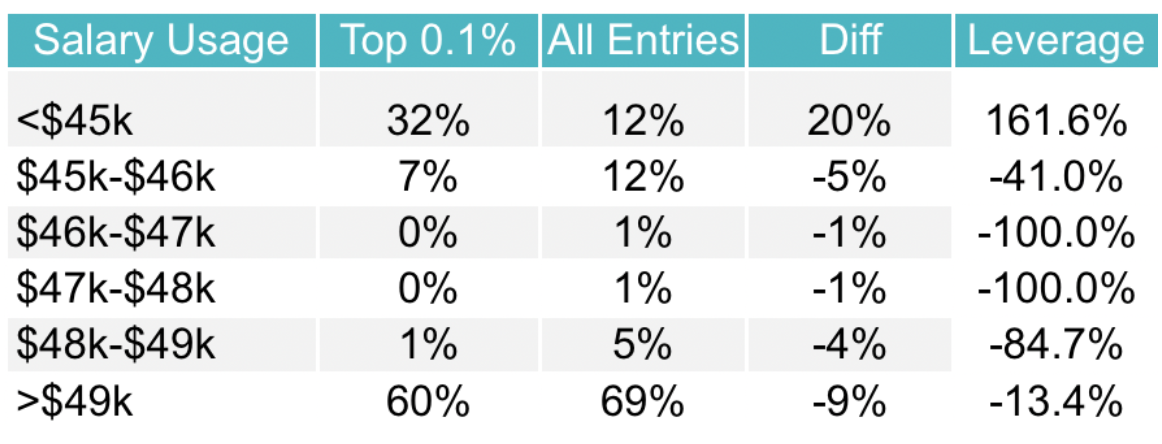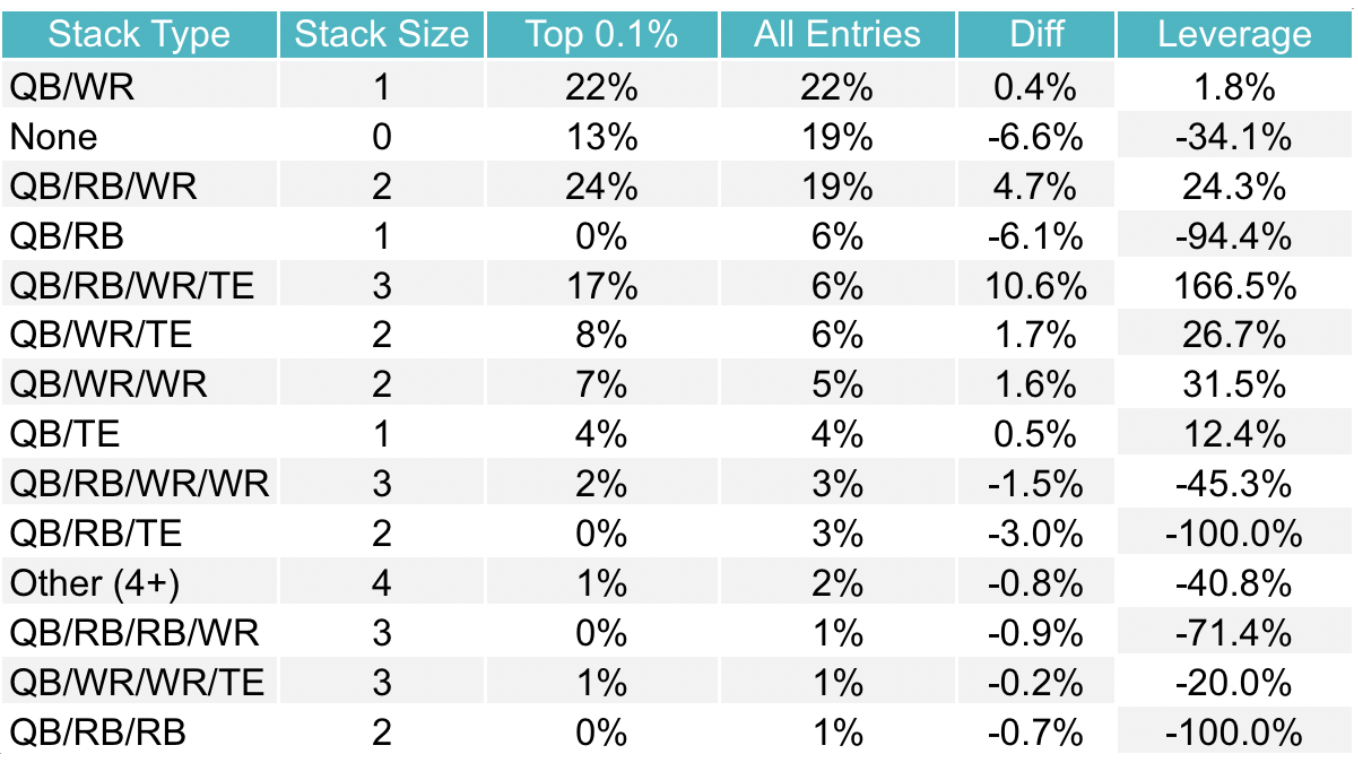FREE: NFL DraftKings SlateIQ - Week 4 - Monday Night Football
Welcome to a special edition of SlateIQ, Monday Night Week 4 edition. 2020 and the pandemic continue to throw wrenches into our plans with the Patriots/Chiefs game being rescheduled to tonight, giving us a 2-game slate instead of normal showdown only. There are still showdown contests of course, but with the contests being massive for this unique 2-game slate, we wanted to focus on that. Follow the money, as they say.
Want more strategy for tonight’s Monday Night Football DFS contests? Check out the Expert Survey and Lineup Builder show!
For those unfamiliar with SlateIQ, we offer a SlateIQ product for NFL, NBA and MLB main slates that uses our very own ResultsDB data to match the upcoming main slate to the historical DFS slates on DraftKings that are most similar based on several different characteristics at the slate, game and player level.
As a reminder, or in case you didn’t read these articles last year, we are doing something a little bit different for Showdown SlateIQ since, well, Showdown contests are quite a bit different than main slate contests. Instead of trying to match previous slates, we want to match previously similar games. So, in order to do that, we created Game Archetypes based on the total amount of scoring in a game, final point differential, and some other team characteristics. That way if we think a game is going to be a close, low-scoring slugfest, we can see how we should be building our Showdown lineups based on what has been winning in Showdown lineups in other close, low-scoring slugfests.
Tonight is a little different with this 2-gamer. Unfortunately, due to the last minute nature of this slate, I wasn’t able to get together the typical SlateIQ data for similar 2-game slates. But what I was able to do was to go back and reference some research I did for 3-game slates from last year’s Thanksgiving slate. After going over the data, I think it’s very applicable to tonight’s slate, and the trends and leverage points you’ll see are very good reference points for building your lineups on tonight’s 2-gamer.
Let’s take a look:
Salary Usage

One thing that really comes into play on these smaller slates that isn’t really a factor on main slates is how much of your salary cap to use. Ownership and being unique are just so important because the goal is not just to make your way to the top of the leaderboard, but to do so with zero or as few dupes as possible.
One way to do that is by leaving salary on the table because your opponents just won’t do it. As we see here, on these smaller slates, most of the field is spending almost their entire cap, and while the % of top lineups are pretty close to in line, the bucket where there’s a large difference is in the those who leave 5k or more on the table in their lineups.
This isn’t to say you should be building exclusively lineups that leave thousands on the table. The point is just that if you’re MME-ing things like the Milly Maker where it’s so unbelievably top heavy, you need to be utilizing more lineups than the field that leave a lot of salary on the table because it’s a really simple and effective way to both get leverage on the field and allow yourself to have unique lineups.
Stack Size

The next thing we should take into account is stacking. By now pretty much everyone knows about stacking in DFS (if you want to see why they’re still advantageous, I wrote about that in a few pieces you can read here). But the thing on smaller slates is that the field really still isn’t doing it enough, and if we focus our lineups on the stack sizes that provide the most leverage over the field, we can generate some more edges for ourselves.
What we’ve seen on smaller slates is that of course the field is still stacking, but they’re still playing too many non-stacked lineups or single stacks. We can capitalize on that by focusing on the double stacks (stack size 2) and triple stacks (stack size 3). The stack size 3 is particularly interesting because it offers by far the greatest leverage. Most people have learned that double stacking on these slates is pretty wise, but the triple stack is still something that feels really uncomfortable for people (myself included). But on these unique small slates, the triple stacks are making up a little over 20% of top lineups, which is a pretty large number. This typically also provides some ownership advantages for us too because frequently someone out of the 3 is going to be lower owned. For example, the Falcons triple stack tonight could be a way to create leverage on a popular stack because while Julio Jones and Calvin Ridley will surely be popular, not many people are going to be clicking Russell Gage or Hayden Hurst, and if the Falcons pass game really blows up to win you the slate, those 2 (or even Toddy Gurley or Brian Hill) could easily be the ones that pop here.
Stack Types

We also need to think about what kind of stacks are best to use on these slates. One thing that jumps out to me is actually something I talked with Headchopper about on our weekly Monday Night Football show, and that’s tight ends. Most of the field is stacking their QB with a WR (or 2), and they’ve actually been stacking QB/RB/WR a lot more than you’d expect, but they are not using tight ends in their stacks nearly enough. With how bad the tight end position is in NFL DFS right now, I think the idea of including a TE in your stack is maybe one of the most beneficial things you can do in your tournament lineup building. And it might even more beneficial on these smaller slates.
That’s my biggest takeaway from this data. I think the QB/RB/WR stack still makes sense, as does the tried and true QB/WR/WR stack. But if you want to double stack, I think the QB/WR/TE just makes too much sense on these slates. And probably the greatest leverage opportunity you can get on these small slates is the combination of the triple stack concept we discussed above with the TE concept in the QB/RB/WR/TE build. Just 6% of the field is playing this kind of lineup, but it has made up nearly the highest percentage of top lineups of any type of stack. It makes a TON of sense too from a leverage and overall GPP theory perspective.
Projected Ownership and Leverage
You can check out our very own Chris Gimino’s projected ownership here when it comes out, but just a couple points I wanted to add about applying the concepts above to this particular slate. Chop and I talked about this as well on the show, but you don’t have to go completely off the board at every position. It’s pretty difficult to see Aaron Jones and CEH failing. That’s not to say you can’t attempt to leverage them as well, but if you use some of these strategies in this piece, you can create your leverage and uniqueness through roster construction without having to just blind fade the absolute smash plays.
If we go back to the QB/RB/WR/TE triple stack concept, it’s a really great way to attack this particular slate in my opinion. You can still play Jones and CEH, but you can do things like play Rodgers, MVS and Tonyan alongside Jones (or min priced Darius Shepherd for even more leverage). Or you can play Mahomes, Tyreek and Kelce with CEH and just bet on a Chiefs rout. You could pivot off Tyreek to Watkins or Hardman as well if you think the Patriots take away Hill. Or finally, you can play Matt Ryan with one of his WRs, Hurst and throw Gurley or Brian Hill in as contrarian pieces of a stack you are hoping goes nuclear.
Overall, it’s up to each of us to decide exactly which stacks or specific players from within those stacks we love. But we can give ourselves the best shot at $1 Million simply by being thoughtful about how much salary we use and what stacks we are playing. Combine that with a little bit of leverage based on ownership, and you’ve got a huge edge on the field in terms of chances of a big score on a small slate like this.
- Build DFS Lineups Like a Pro!
- Access to Content and LineupHQ
- NFL, NBA, MLB and PGA

